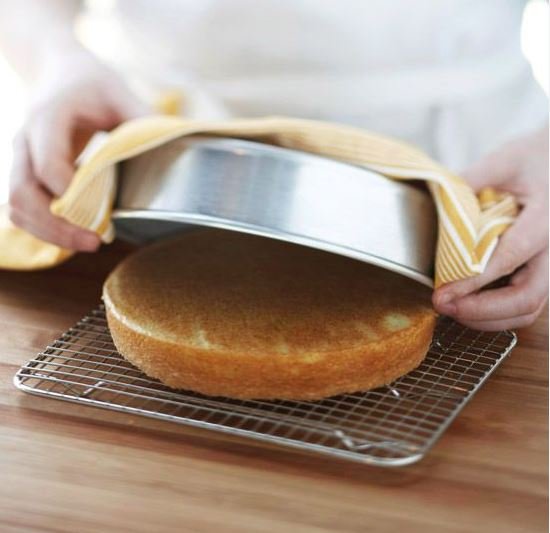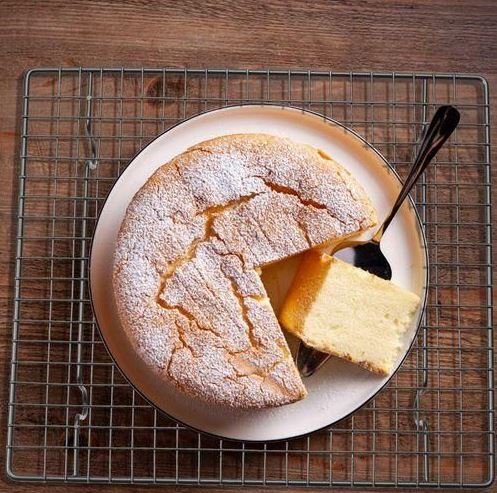There’s nothing quite like eating a cake fresh from the oven; it’s warm, comforting, and much sweeter. One important step is cooling the cake completely before frosting or decorating it. But why is this step so important? I will guide you through this article.
Why is it necessary to cool the cake?
When a cake is removed from the oven, it cooks from heat. If you were to cut into a hot cake, it would be too soft and might crumble or collapse. Allowing the cake to cool completely will make it more stable and easier to handle and frost.
Another reason to let your cake cool completely is to prevent the frosting from melting or sliding off. If you apply frosting to a warm cake, it will melt and not set properly.
Why To Let Cake Cool Before Decorating It?
If you attempt to decorate a warm cake with frosting or icing, it will melt and slide off, resulting in a messy look. Allowing the cake to cool ensures the frosting sets properly and maintains its shape.
Warm cakes are more delicate and crumble when handled. Cooling the cake allows it to set and firm up, making it easier to handle without falling apart.
When you use icing on a warm cake, there is a risk of damaging the cake. When cake is hot, it is much more fragile and far more likely to break as you spread and dollop things on top.

How long it takes for a cake to completely cool?
It takes 1 to 2 hours for a cake to cool completely on the counter. Thicker cakes or larger cake layers may take about 2 hours, while thinner cakes or smaller layers may cool down within an hour, depending on the cake size.
How to speed up the cooling process?
Place it in the refrigerator:
Placing the cake in the refrigerator can help speed up the cooling process. The cool temperatures will help firm up the cake faster. However, be cautious not to leave the cake in the refrigerator for too long as it can dry out.
Use a fan:
Positioning a fan near the cake can help circulate air and cool it down faster. This method works best when the cake is placed on a cooling rack. The fan’s airflow will help evade moisture from the cake, resulting in quicker cooling.
Cut the cake into smaller portions:
You can cut the cake into smaller portions. Smaller pieces of cake will cool faster than a whole cake.

Common mistakes to avoid when cooling a cake
- Frosting a warm cake can lead to a messy situation. The heat from the cake can cause the frosting to melt and slide off. Always make sure your cake is completely cooled before applying frosting.
- Placing a hot cake in the refrigerator can cause condensation and affect the cake’s texture. Allow the cake to cool slightly before transferring it to the refrigerator.
- Placing a hot cake directly on a countertop or other surface can trap heat and prevent proper airflow. Always transfer your cake to a cooling rack to promote even cooling.
- Placing the cake in a drafty area, such as near an open window or air vent, can cause uneven cooling and result in a sunken or collapsed cake. Choose a draft-free spot on your countertop or table for cooling.
- Stacking warm cakes on each other can cause them to stick together and become misshapen. Allow each layer to cool completely on a separate wire rack before assembling the cake.
- Covering a warm cake with plastic wrap or a cake dome can trap steam and moisture, creating a soggy texture. Wait until the cake has cooled completely before covering it for storage.
- Moving a cake before it has cooled completely can cause it to collapse or stick to the rack. Allow the cake to cool before transferring it to a different location.

Conclusion:
Properly cooling a cake is an important step in the baking process that can greatly impact the outcome of your dessert.
By avoiding common mistakes like allowing the cake to cool in the pan for too long, not using a wire rack, cooling in a drafty area, stacking warm cakes, covering the cake while warm, rushing the cooling process, and skipping the crumb coat, you can ensure that your cake turns out perfectly every time.
Cooling your cake properly allows it to set, develop its flavor, and prepare for frosting and decoration. It also helps prevent issues such as a soggy texture, and frosting melting off.
